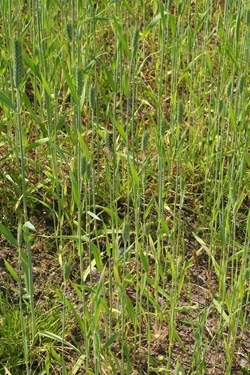 The thought of weeds thriving in a farm’s arable crops is usually cause for concern, but it might be one way to help invertebrates to recover according to a new study by the Game & Wildlife Conservation Trust (GWCT). They found that as the number of arable weeds increased, so did the number and diversity of invertebrates. This means more food for farmland birds and may mean more food for pollinators and more natural control of crop pests (biological control).
The thought of weeds thriving in a farm’s arable crops is usually cause for concern, but it might be one way to help invertebrates to recover according to a new study by the Game & Wildlife Conservation Trust (GWCT). They found that as the number of arable weeds increased, so did the number and diversity of invertebrates. This means more food for farmland birds and may mean more food for pollinators and more natural control of crop pests (biological control).
Researchers were keen to unlock the best way to improve insect number, so they reviewed 18 years of research into winter wheat, the most widespread global crop, to investigate the link between weeds in crops and invertebrate numbers on farmland. With popular agri-environment options focusing heavily on the edges of the farm, such as hedgerows, woodland and headlands, the results suggest that the answer might lie closer to the crops.
By focusing on winter wheat, the study recognises farmers’ primarily role – providing food to a growing global population with good crop yields – whilst balancing increasing pressure to support and preserve biodiversity on their land.
The study showed that all groups of invertebrates increased as arable weeds increased. The relationship was stronger for invertebrates that eat plants, compared to those that are predatory, but both groups increased with weed cover. Increased weed cover also caused an upturn in chick food availability.
Professor John Holland, Head of Farmland Ecology at the GWCT and one of the paper’s authors, says: “We recognise that a weed-free field poses a lower risk whilst also being kinder on the eye. However, they may not be the most profitable.
“If a balance can be achieved between having lower herbicide costs and higher levels of invertebrates, with potentially better biological control and crop pollination, then that’s a win-win situation.”
Average weed cover varied from as low as 2.7% ground cover to 29%, with annual meadow-grass and knotgrass the most common species, followed by chickweed, black grass and the field pansy. The most common invertebrates were spiders, beetles and flies, followed by bugs and parasitic wasps.
Annual meadow-grass, knotgrass and chickweed appear to be the most desirable solution, balancing the diversity of invertebrate species they support with their impact on crop production.
This knowledge may allow farmers the confidence to tolerate certain arable plants that do not threaten their farming operation, knowing that these help support invertebrates, and therefore other farmland wildlife such as birds.
The data analysis and preparation of this paper was funded by the Esmée Fairbairn Foundation.
The paper The Potential of Arable Weeds to Reverse Invertebrate Declines and Associated Ecosystem Services in Cereal Crops was published in Frontiers in Sustainable Food Systems and is publicly available via open access here.
Notes to editors
The Game & Wildlife Conservation Trust – providing research-led conservation for a thriving countryside. The GWCT is an independent wildlife conservation charity which has carried out scientific research into Britain’s game and wildlife since the 1930s. We advise farmers and landowners on improving wildlife habitats. We employ more than 60 post-doctoral scientists and other research staff with expertise in areas such as birds, insects, mammals, farming, fish and statistics. We undertake our own research as well as projects funded by contract and grant-aid from government and private bodies.
For information, contact:
Eleanor Williams
Telephone: 07592 025476
Email: press@gwct.org.uk